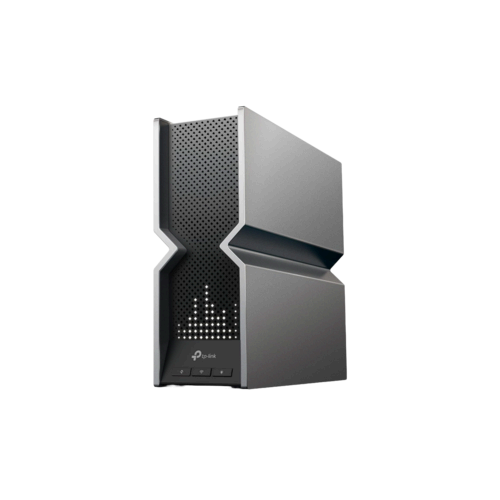Key Takeaways
- Wi-Fi 7 is a major step up over Wi-Fi 6E and has improvements in pretty much every aspect, including data speeds, latency, and reliability.
- Wi-Fi 7 hardware is expensive and relatively limited for now.
Wi-Fi 7 is the newest Wi-Fi standard that brings significant performance improvements. But as it’s still in its infancy, does it make sense to upgrade to Wi-Fi 7 or opt for the relatively more common Wi-Fi 6E?
What Is Wi-Fi 6E?
Wi-Fi 6E is a variant of the Wi-Fi 6 standard, which can use the 6GHz frequency band in addition to the conventional 2.4GHz and 5GHz bands. But it’s not an entirely new standard and is also based on the same IEEE 802.11ax protocol as Wi-Fi 6. This is why the E in Wi-Fi 6E stands for “extended.”
The addition to the 6GHz band enables Wi-Fi 6E to utilize up to 14 additional 80MHz channels or seven additional 160MHz channels. As a result, it can deliver better performance despite having the same theoretical top speed of 9.6Gbps as Wi-Fi 6.
Wi-Fi 6E can also handle more devices without getting congested and has less interference, as no legacy devices can operate in the 6GHz band. Additionally, it brings all the benefits of Wi-Fi 6, such as OFDMA (orthogonal frequency-division multiple access) and an improved version of MU-MIMO.
So essentially, with Wi-Fi 6E, you get a beefed-up Wi-Fi 6 that can deliver faster data speeds, low latency, and little interference.
What’s New in Wi-Fi 7
Wi-Fi 7 is the true successor to Wi-Fi 6 and the newest Wi-Fi standard. It’s based on IEEE 802.11be protocol, and like Wi-Fi 6E, it can utilize 2.4GHz, 5GHz, and 6GHz frequency bands. However, its main highlight is Extremely High Throughput (EHT), which allows it to offer insanely high data speeds. It can theoretically support up to 46Gbps speed, which is almost five times that of Wi-Fi 6E. But remember that a Wi-Fi connection is generally limited to one specific band at a time, so the real-world top Wi-Fi 7 speeds you get will be significantly lower but still in the multi-gig range.
It also provides lower latency than previous Wi-Fi protocols and supports ultra-wide 320MHz channels. Plus, Wi-Fi 7 will offer better connection quality and reliability through its Multi-Link Operation, which can dynamically switch between bands or use all three bands simultaneously. Still, while using multiple bands, it won’t be able to pass the top speed of its highest band.
In other enhancements, it has a higher 4096-QAM (Quadrature Amplitude Modulation), which decides how much data is stuffed in each signal. It’s one of the reasons why Wi-Fi 7 is capable of EHT. In comparison, Wi-Fi 6E and Wi-Fi 6 have an 1024-QAM.
How is Wi-Fi 7 Beneficial Over Wi-Fi 6E?
Although Wi-Fi 6E in itself is impressive, Wi-Fi 7 packs significant upgrades over it. For example, Wi-Fi 7 can offer faster speeds in every single Wi-Fi band than Wi-Fi 6E. So it’s not just the 6GHz band that will get the most significant boost because of the 320MHz channels; the 2.4GHz and 5GHz bands will also get faster than previous generations.
As for other benefits, Wi-Fi 7 is better at handling interference than Wi-Fi 6E. If you live in a high-rise or a dense neighborhood, the newest Wi-Fi generation will perform better as it can seamlessly slice off parts of a channel that has interference rather than ditching the entire channel, which happens with Wi-Fi 6E.
The Wi-Fi 6 successor also has improvements in terms of signal range. While you won’t see drastic improvements, Wi-Fi 7 broadcasters will generally have a better transmission range than comparable Wi-Fi 6E routers in all bands. It’s important to note here that how much of the Wi-Fi 7 benefits you get will depend on your router, client devices, and the signal environment.
Can You Get Wi-Fi 7 Devices?
Manufacturers started announcing Wi-Fi 7 devices in late 2022. So, as of early 2024, there is a small selection of wireless routers and client devices, such as smartphones and laptops, which can enjoy the benefits of Wi-Fi 7.
While you can buy these Wi-Fi 7 devices, most Wi-Fi 7-capable products are still expensive as the new standard is still in its infancy. That said, with Wi-Fi Alliance’s announcement of the Wi-Fi 7 Certified program in January 2024, swift uptake of the new standard is expected. We will also see the cost of Wi-Fi 7 routers going down and its support arriving in mid-range client devices going forward.

TP-Link Archer BE800
The TP-Link Archer BE800 is one of the few Wi-Fi 7 routers that you can buy in early 2024. It comes with multiple 10Gbps LAN ports, tri-band support, and a sleek design.
Which Should You Choose?
Wi-Fi 7 arguably offers significant improvements over Wi-Fi 6E. But for most people upgrading from Wi-Fi 5 or older generations, Wi-Fi 6E makes the most sense. It’s plenty fast to handle gigabit-class internet or even 2.5 gigabit internet. Besides the speed improvements, it’s better at handling a large volume of devices compared to Wi-Fi 5, and the 6GHz band will help avoid interference in 2.4GHz and 5GHz bands, particularly if you reside in a dense locality.
Additionally, as mentioned earlier, Wi-Fi 7 routers are expensive as of early 2024 and will remain so in the near term. It will also be a while before you have a decent number of Wi-Fi 7 client devices in your household. So, as you won’t really be able to enjoy what Wi-Fi 7 offers, it makes little sense to shell out the big bucks right now. You can consult our best Wi-Fi 6E routers guide for recommendations.
That said, if you are upgrading a chunk of your gadgets with Wi-Fi 7 supporting ones and have a multi-gig internet, Wi-Fi 7 can make you futureproof and allow you to make the most of your internet. You can get started with one of our handpicked Wi-Fi 7 router recommendations.

